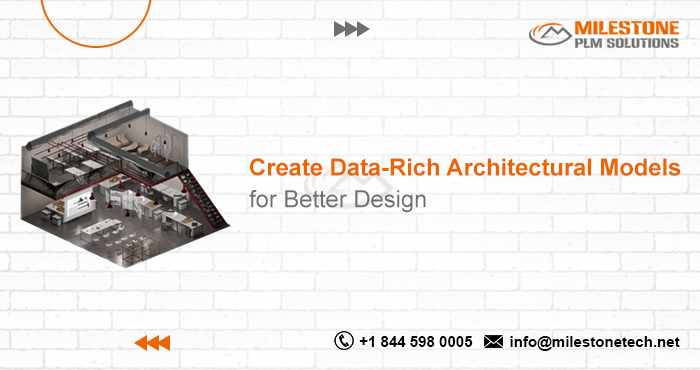Create Data-Rich Architectural Models for Better Design
Traditionally, architectural design has relied heavily on experience, intuition, and physical models. While these elements remain crucial, the field is undergoing a revolution with the integration of data. Data-rich architectural models are transforming the design process, leading to more informed decisions, optimised structures, and buildings that better serve their users.
Contents |
[edit] Why Data-Rich Models?
Architects have always dealt with data - sun angles, material properties, building codes. However, the explosion of digital tools and sensor technology has created a vast pool of new information. This data can include:
- Environmental data: sunlight patterns, wind direction, noise levels
- Occupancy data: building usage patterns, foot traffic flow
- Performance data: energy consumption, thermal comfort levels
- Cost data: material pricing, construction estimates
By incorporating this data into architectural models, we can create a more holistic understanding of a design's impact.
[edit] Benefits of Data-Rich Design
Data-rich models offer several advantages over traditional methods:
- Improved decision-making: Data analysis can reveal hidden insights that might be missed by the human eye. For example, simulations can predict how sunlight interacts with the building throughout the year, informing decisions about window placement and shading strategies.
- Performance optimisation: Data can be used to optimise a building's energy efficiency, thermal comfort, and acoustics. This can lead to significant cost savings on construction and operation.
- Enhanced user experience: Occupancy data can be used to design buildings that cater to user needs. For instance, analysing foot traffic patterns can help optimise the layout and placement of amenities.
- Streamlined collaboration: Data-rich models provide a shared platform for architects, engineers, and other stakeholders. This fosters better communication and reduces the risk of errors and omissions.
[edit] Building Data-Rich Models
There are several tools and technologies that enable the creation of data-rich architectural models:
- Building Information Modeling (BIM): BIM software allows architects to create intelligent 3D models that embed data within each element. This data can include material properties, performance characteristics, and maintenance schedules.
- Generative Design: This uses artificial intelligence to automatically generate design options based on specific criteria. This can be particularly useful for exploring a wide range of possibilities during the early design stages.
- Environmental Analysis Software: These tools allow architects to simulate how a building will interact with its environment, including factors like solar radiation and wind patterns.
- Sensor Technology: Sensors can be used to collect real-time data on a building's performance, such as energy consumption and occupant comfort levels. This data can then be fed back into the design process for future projects.
[edit] Challenges and Considerations
While data-rich models offer immense benefits, there are challenges to consider:
- Data overload: With so much data available, it's crucial to identify the most relevant information for the specific project and user needs.
- Data quality: The accuracy and consistency of data is critical for reliable results. Architects need to establish protocols for data collection and management.
- Technical expertise: Utilising data-rich models effectively requires some technical knowledge of BIM software and analytical tools. Training and skill development are essential for architects.
[edit] The Future of Data-Driven Design
The integration of data into architectural design is still evolving, but the potential is undeniable. As data collection and analysis become more sophisticated, we can expect even richer models that lead to more sustainable, efficient, and user-centric buildings. By embracing data-driven design, architects can create structures that are not just beautiful but also intelligent and responsive to the needs of the people who inhabit them.
--Engineering Design & BIM Services
[edit] Related articles on Designing Buildings
- As-built drawings and record drawings.
- As-installed drawing.
- Asset information model.
- Benefits of manufacturer-created BIM models.
- BIM dimensions.
- BIM dimensions, maturity and levels of development.
- BIM execution plan.
- BIM for dummies - an interview.
- Construction drawing.
- Construction Operations Building Information Exchange (COBie).
- CIC BIM Protocol.
- Concept drawing.
- Common data environment.
- Component drawing.
- Design drawings.
- Detail drawing.
- Drawing board.
- Elevations.
- Floor plan.
- General arrangement drawing.
- Industry Foundation Classes.
- Level 2 BIM.
- Level 3 BIM.
- Level of detail.
- Open data.
- PAS 1192-2:2013.
- PAS 1192-3:2014.
- Production drawing.
- Project information model.
- Scale drawing.
- Section drawing.
- Shop drawings.
- Site layout plan.
- Site plan.
- Symbols on architectural drawings.
- Technical drawing.
- Title plan.
- Types of building models.
- Types of drawings for building design.
- Types of paper.
- Types of projection.
- Concept drawing.
- Component drawing.
- Visualisation.
BIM Directory
[edit] Building Information Modelling (BIM)
[edit] Information Requirements
Employer's Information Requirements (EIR)
Organisational Information Requirements (OIR)
Asset Information Requirements (AIR)
[edit] Information Models
Project Information Model (PIM)
[edit] Collaborative Practices
Industry Foundation Classes (IFC)









Comments
https://www.designingbuildings.co.uk/wiki/Marketing_opportunities_on_Designing_Buildings
https://www.designingbuildings.co.uk/wiki/Editorial_policy
https://www.designingbuildings.co.uk/wiki/Page_about_me